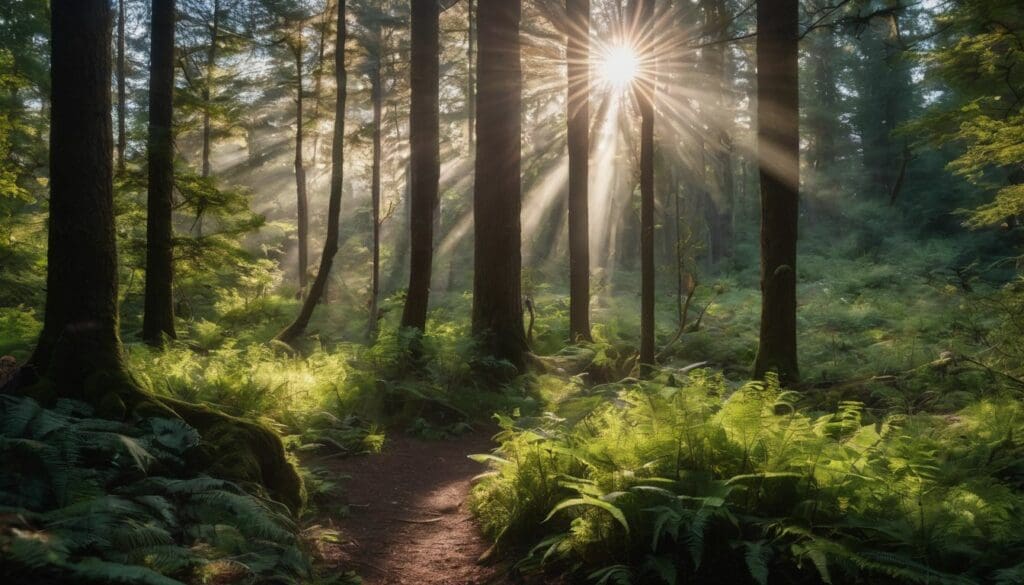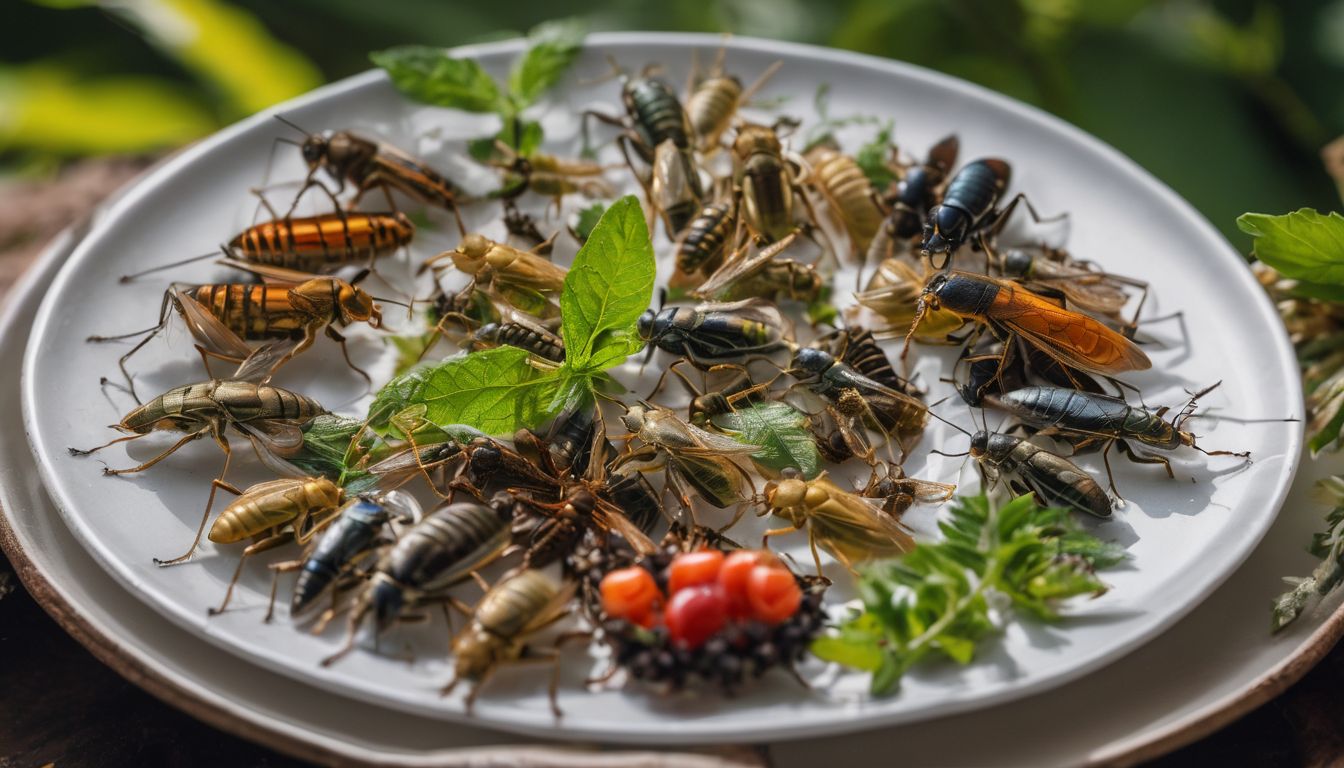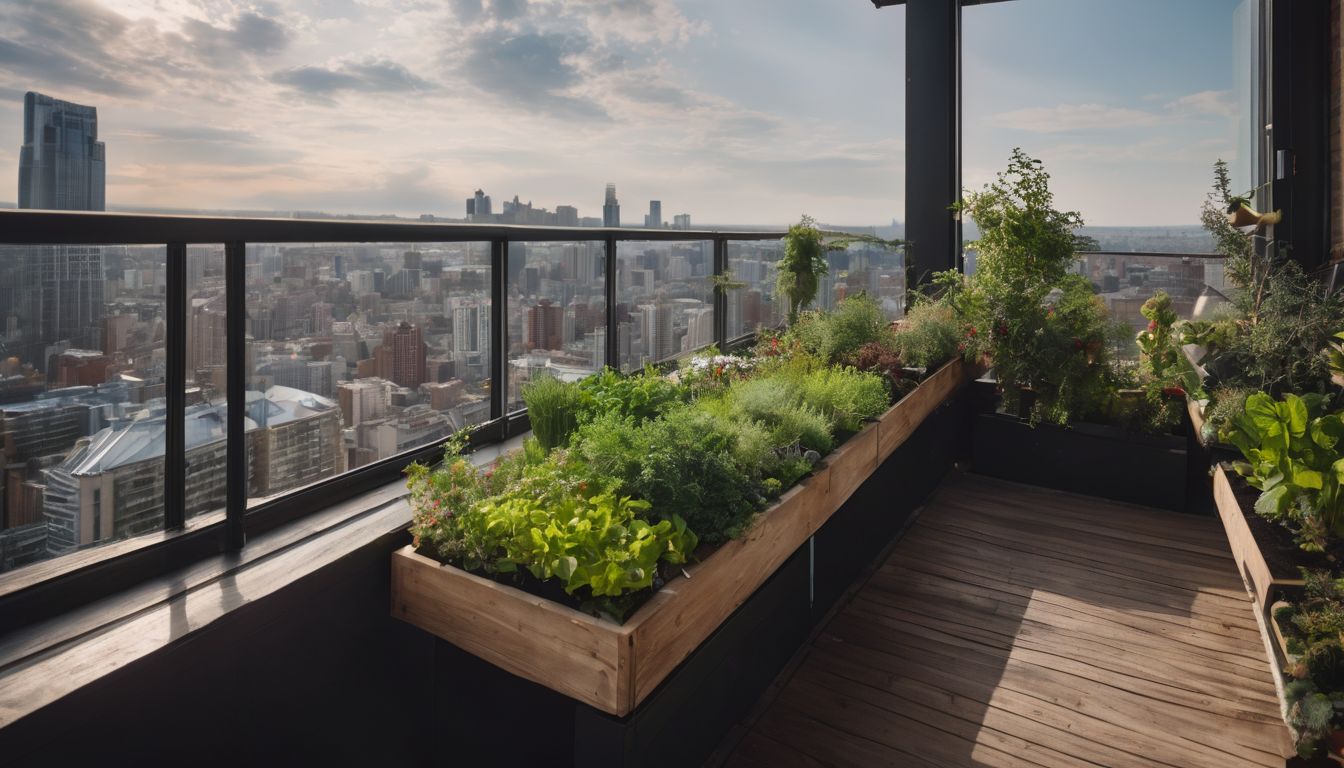Venturing into nature’s pantry can seem daunting, with worries of picking something harmful rather than helpful. Did you know that many everyday plants around us are edible and nutritious? This article will guide you through the essentials of foraging safely, so you’ll be able to distinguish between tasty treats and toxic troublemakers.
Let’s discover how to feast from the wild responsibly!
Key Takeaways
- Before eating any wild plants, verify they are safe by using reliable identification guides or consulting with experienced foragers.
- Steer clear of areas that might be contaminated with pollutants or chemicals when foraging to ensure you’re collecting healthy food.
- Gather only what you need and maintain respect for the environment, ensuring there’s enough left for wildlife and future growth.
- In addition to plants, look into other edible options like certain mushrooms, parts of pine trees, and insects – but always proceed with caution and proper knowledge.
- Enhance your foraging skills through local workshops, online courses, and community groups which can offer valuable hands-on experience and guidance.
The Basics of Foraging
Foraging is the act of searching for wild food sources in nature, a skill that has been practiced for centuries. By learning the benefits and rules of safe foraging, you can enjoy the abundance of edible plants and other resources found in the wild.
What is foraging
Foraging involves venturing into nature to collect food that grows in the wild. It’s an ancient practice where people gather wild edibles like plants, fruits, nuts, and mushrooms directly from their natural habitats.
Foragers tap into a wealth of nutritious and often organic resources that flourish outside cultivated gardens or farms.
This activity serves as both a survival skill and a way to connect with the environment responsibly. By identifying edible wild plants and other natural food sources, foragers enjoy fresh foods that are typically not available in grocery stores.
Engaging in this practice requires knowledge of safe foraging practices to avoid toxic species and ensure sustainability through responsible harvesting techniques. Pursuing wildcrafting allows individuals to explore the outdoors while collecting delicious treasures straight from Mother Nature’s pantry.
Benefits of foraging
Foraging provides access to fresh, nutritious food for those who are interested in sustainable living. This activity allows individuals to connect with nature and gain a better understanding of the environment around them.
By foraging, people can reduce their ecological footprint by relying less on commercial agriculture and processed foods.
Through foraging, one can also experience the satisfaction of obtaining food directly from the source while simultaneously building valuable wilderness survival skills. Additionally, this practice promotes biodiversity and supports conservation efforts as it encourages responsible harvest techniques that respect natural resources.
Rules to follow for safe foraging
To safely forage for wild edibles, follow these essential rules:
- Always be absolutely certain of a plant’s identification before consuming it. Use reliable resources and guidebooks to confirm the edibility of plants.
- Avoid foraging in polluted areas or places treated with pesticides to ensure that you are gathering safe and healthy food.
- Respect the environment and practice sustainable foraging by only taking what you need and leaving enough behind for wildlife and future growth.
- Learn about and adhere to local regulations when it comes to foraging on public lands to avoid any legal issues or harm to the ecosystem.
- Be aware of potential allergens and thoroughly research any new plants before consumption, as individuals may have different sensitivities to certain wild edibles.
- When uncertain about a plant’s edibility, seek guidance from experienced foragers or experts in the field to avoid any potential risks associated with misidentification.
- Stay cautious around unfamiliar mushrooms and only consume those that have been positively identified as safe, as many wild mushrooms can be toxic or deadly if ingested.
How to Identify Edible Plants
Proper identification of edible plants is crucial for safe foraging. Knowing common edible plants to look for and which ones to avoid can prevent potential health risks.
Importance of proper identification
Proper identification of edible plants is crucial for safe foraging. It helps avoid consuming poisonous plants and ensures the sustainability of wild edibles. By learning to identify common edible plants and those to avoid, foragers can confidently gather nutritious foods while protecting their local ecosystem.
When identifying wild edibles, it’s essential to consider characteristics like leaf shape, color, smell, and growing habitat. Carrying a detailed guidebook or taking classes on plant identification can also enhance your foraging skills.
Engaging with this process not only supports safe foraging but fosters a deeper connection with nature as well.
Common edible plants to look for
- Dandelion: Recognisable by its bright yellow flowers, dandelions are versatile and can be eaten in salads or used to make tea.
- Nettle: Despite its stinging leaves, nettle is packed with nutrients and can be used in soups, teas, or as a spinach substitute.
- Wild garlic: Easily identifiable by its distinct smell, wild garlic adds a flavourful punch to a variety of dishes.
- Elderflower: The fragrant blossoms are perfect for making syrups, cordials or adding to baking recipes.
- Wild strawberries: These tiny berries pack a flavourful punch and can be enjoyed fresh or turned into delicious preserves.
Plants to avoid
Identifying edible plants is crucial for safe foraging. Some common plants may look appealing but can be harmful or even poisonous. When foraging, avoid these plants:
- Hemlock – This plant resembles wild carrot and can be fatally toxic if ingested.
- Foxglove – Its bell-shaped flowers may attract attention, but all parts of the plant can cause severe health issues.
- Deadly Nightshade – The shiny black berries may seem appetising but are extremely toxic.
- Poison Ivy – Contact with this plant can lead to a painful skin rash.
- Yew – Every part of the plant, except the fleshy part of the aril, is highly poisonous.
Other Edible Resources in the Wild
In addition to edible plants, wild mushrooms, pine trees, and insects are also valuable resources for foraging. To learn more about these alternative sources of wild edibles, continue reading the full blog article.
Wild mushrooms
When foraging for wild mushrooms, it’s crucial to accurately identify them before consumption. Edible wild mushrooms can be a tasty addition to your foraged meals, but misidentification can lead to serious illness or even death.
Look out for common edible varieties such as chanterelles, morels, and oyster mushrooms while steering clear of toxic species like the death cap or destroying angel. Utilise reliable resources and seek guidance from experienced foragers to enhance your knowledge of safe mushroom identification.
Foraging enthusiasts should always exercise caution when collecting wild mushrooms and never consume any specimens unless they are absolutely certain about their identification. By learning how to safely identify and gather wild mushrooms, individuals can cultivate a deeper connection with nature while enjoying the benefits of sustainable foraging practices.
Pine trees
Pine trees provide several edible resources, making them valuable for foragers. The inner bark of pine trees can be dried and ground into a nutritious flour rich in vitamins and minerals.
Additionally, pine needles are rich in vitamin C and can be brewed into a tea that offers immune-boosting properties. For environmentally conscious individuals looking to support conservation efforts, responsibly harvesting these renewable resources from pine trees aligns with sustainable foraging techniques.
Insects living on or around pine trees also offer an additional source of protein for foragers. From ants to caterpillars, many insects found in this habitat are edible and provide essential nutrients like protein and fats without negatively impacting the environment when harvested mindfully.
Insects
Insects provide an additional source of protein and nutrients when foraging in the wilderness. They are a valuable and sustainable food resource, often overlooked but rich in essential nutrients.
Insects such as grasshoppers, ants, and mealworms can be safely consumed after proper identification to avoid any potential risks associated with poisonous species. When incorporating insects into your foraging practices, it’s crucial to gather them from areas free of pesticides or harmful chemicals, ensuring that they are safe for consumption.
Insects play a significant role in sustainable foraging practices by adding variety to wild edibles. Consuming insects is not only environmentally friendly but also contributes to reducing the demand on traditional livestock farming, making it a more sustainable option for obtaining essential nutrients from the natural environment.
Where to Find Foraging Resources
Find foraging resources near your home in parks, forests, and other natural areas. Look for local classes or workshops on wild edibles or explore online resources to expand your knowledge of foraging.
Near your own home
Easily start foraging near your home by exploring nearby parks, forests, or even your own garden. Check if any local wild food experts offer guided walks in your area. Look into community gardens and public green spaces as potential foraging spots.
Scour online forums and social media groups, where fellow enthusiasts might share their favorite foraging locations around town.
Utilise resources such as field guides specific to your region and apps like iNaturalist to identify local edible plants. Engage with neighbours who may have knowledge of edible plants growing in the vicinity.
Local classes or workshops
Local classes or workshops provide practical hands-on experience in identifying and harvesting wild edibles. They offer expert guidance and knowledge from experienced foragers. Attending these classes or workshops can help you build a community with like-minded individuals, exchange valuable tips, and learn about local regulations concerning foraging.
Online resources
Looking for online resources is a great way to expand your foraging knowledge and connect with like-minded individuals. Here are some online platforms to help you with your foraging journey:
- Websites dedicated to wild edibles that provide comprehensive information, including images and descriptions of different plant species and their uses.
- Social media groups and forums where you can engage with experienced foragers, ask questions, and share your own experiences.
- Educational videos and tutorials on platforms like YouTube, offering visual guidance on plant identification and safe foraging practices.
- Online courses or webinars led by experts in the field, providing in-depth knowledge on identifying edible plants and sustainable foraging practices.
- Mobile apps specifically designed for foragers, offering features such as plant identification tools, location-based edible plant maps, and safety guidelines while foraging outdoors.
- Blogs and online articles written by seasoned foragers sharing their personal tips, tricks, and cautionary tales when it comes to wild food gathering.
- Online communities focused on conservation and environmental stewardship may also provide valuable resources related to ethical foraging practices and sustainable wilderness food gathering techniques.
Conclusion
In conclusion, foraging for wild edibles requires careful attention to safety. Proper identification of edible plants is crucial. It’s important to know where and how to find reliable resources for foraging.
With the right knowledge and caution, anyone can enjoy the benefits of harvesting wild food while preserving nature.
FAQs
1. What is foraging for wild edibles?
Foraging for wild edibles entails searching the outdoors, such as wilderness and natural areas, to gather food like plants and insects that are safe to eat.
2. How do I identify edible plants when I’m out foraging?
Learn about edible plant identification through guides or experts so you know which plants are safe to harvest and consume when you’re navigating foraging areas.
3. Are there any tips on how to safely forage?
Always follow these important tips: get permission before gathering wild edibles on private land, never eat anything unless you’re 100% sure it’s safe, and be mindful of protected species while outdoor foraging.
4. Can I eat insects found in the wild?
Yes, but just like with plants, ensure you know how to correctly identify which insects are edible before consuming them during your wilderness adventures.
5. Why should safety be a priority in my wildcrafting practices?
Making safety a priority prevents harmful mistakes; always double-check what you collect against reliable sources so each adventure into nature remains both fun and safe.





